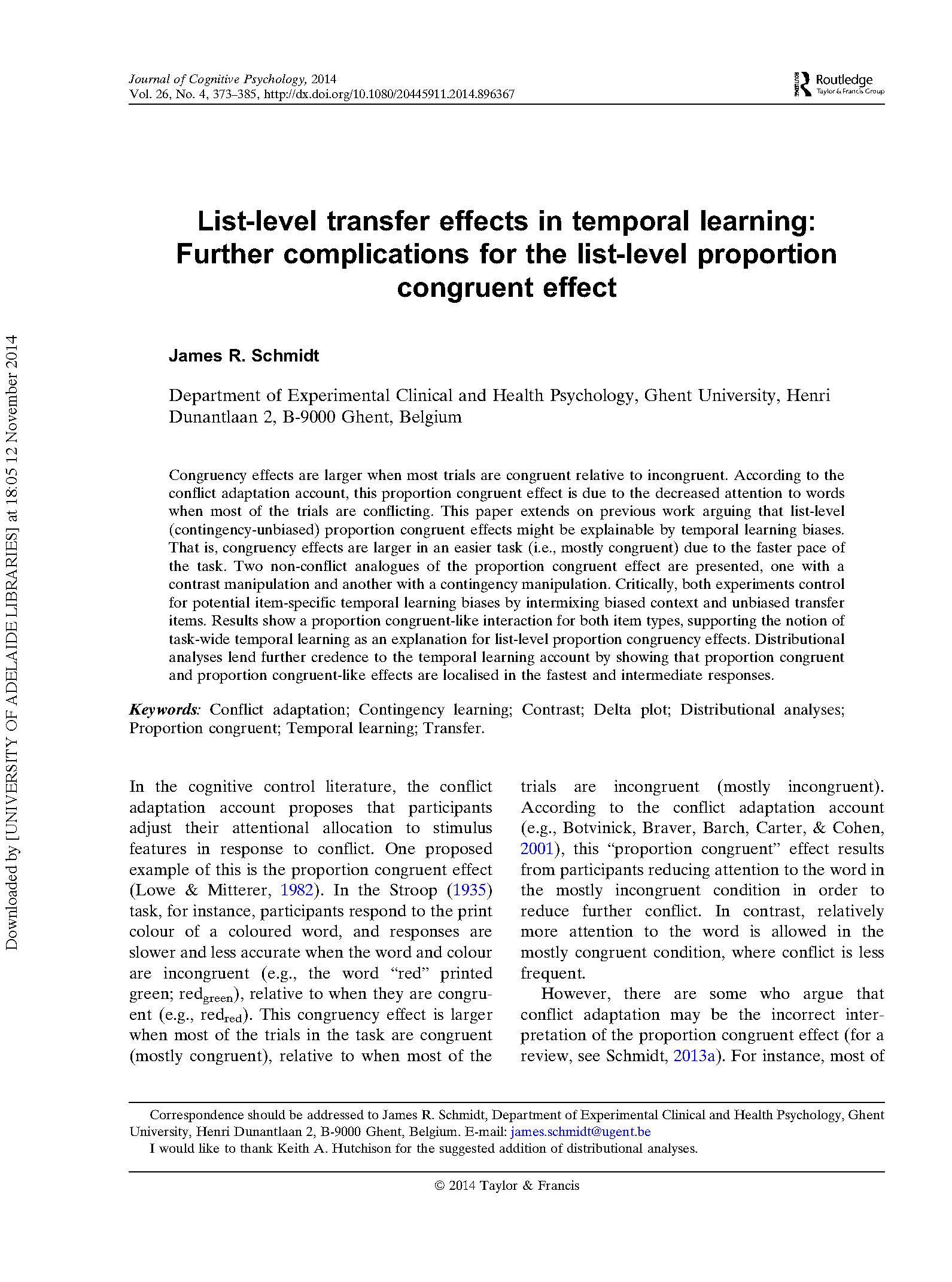Congruency effects are larger when most trials are congruent relative to incongruent. According to the conflict adaptation account, this proportion congruent effect is due to the decreased attention to words when most of the trials are conflicting. This paper extends on previous work arguing that list-level (contingency-unbiased) proportion congruent effects might be explainable by temporal learning biases. That is, congruency effects are larger in an easier task (i.e., mostly congruent) due to the faster pace of the task. Two non-conflict analogues of the proportion congruent effect are presented, one with a contrast manipulation and another with a contingency manipulation. Critically, both experiments control for potential item-specific temporal learning biases by intermixing biased context and unbiased transfer items. Results show a proportion congruent-like interaction for both item types, supporting the notion of task-wide temporal learning as an explanation for list-level proportion congruency effects. Distributional analyses lend further credence to the temporal learning account by showing that proportion congruent and proportion congruent-like effects are localised in the fastest and intermediate responses.
List-level transfer effects in temporal learning: Further complications for the list-level proportion congruent effect
